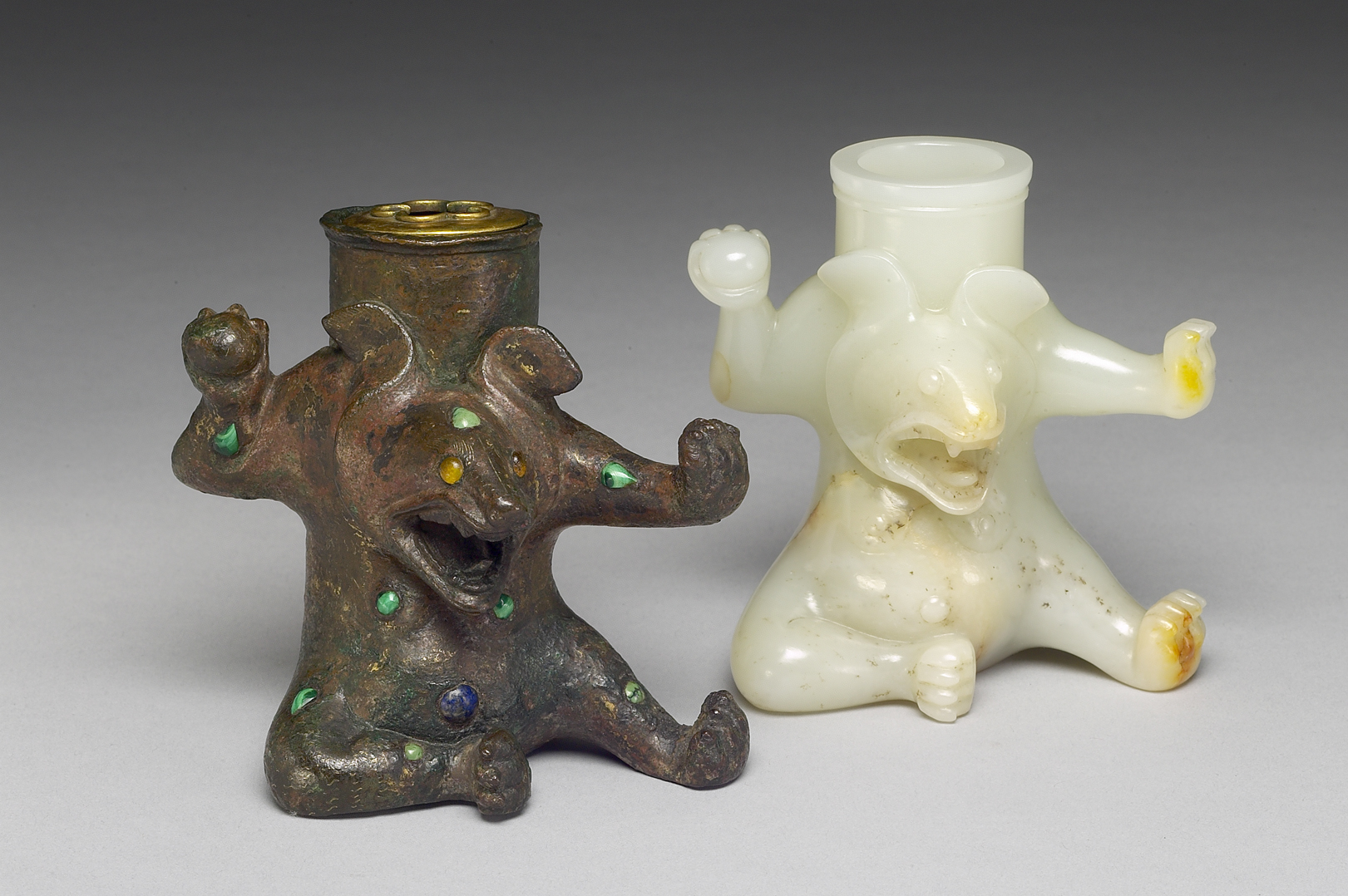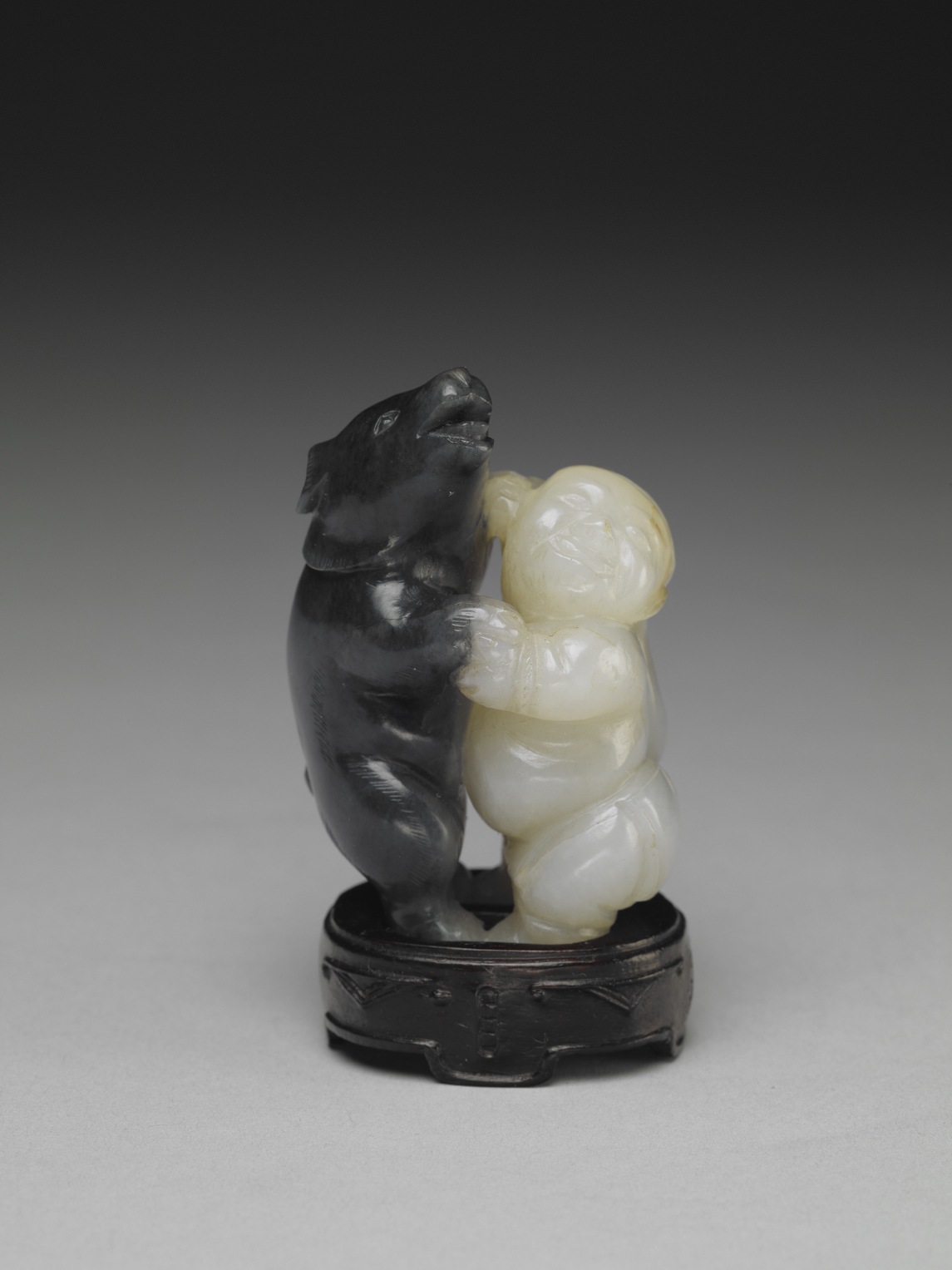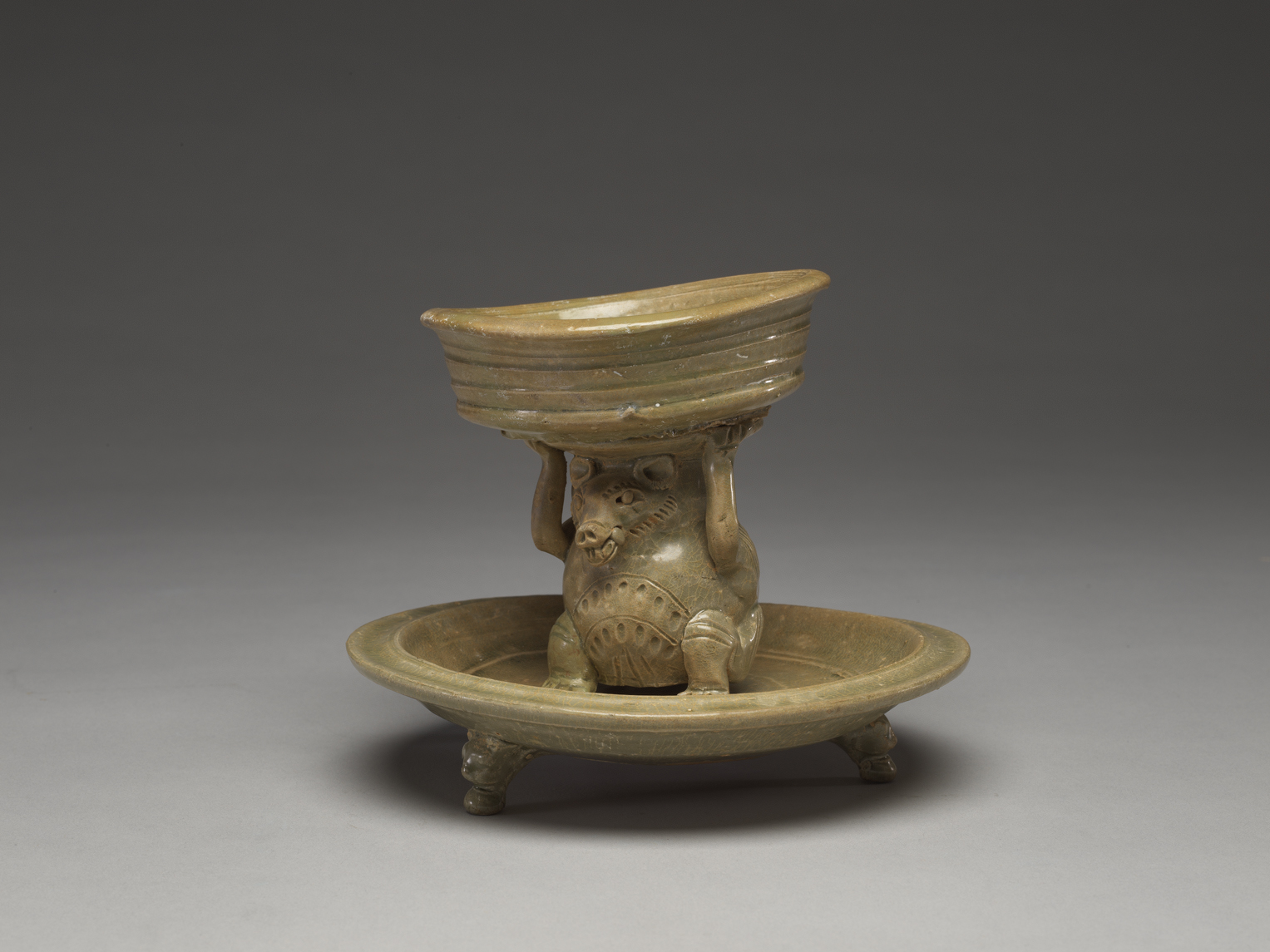Introduction
Chinese legend says that when a bear reaches the age of 500, it can transform into a myriad manifestations. Supernatural stories such as this may be difficult to believe today, but the bear as a symbol of physical strength has long and deep roots in the history of traditional Chinese thought.
In conjunction with the 2017 Taipei Summer Universiade, the mascot for which is "Bravo," a Formosan black bear, the National Palace Museum is presenting a special display of artworks in its collection featuring bears. Examples include from the Wu to Western Jin period a bear-shaped celadon lamp and a dish supported by small bears most likely used as a lamp as well. In the Qing dynasty, there are also bear-shaped vessels in bronze and jade that demonstrate the Qianlong emperor's innovative reworking of tradition based on an ancient Han dynasty bronze bear in his collection. Also, a jade carving of a boy and a bear in embrace show the skillful use of black and white parts in the original mineral to suggest the two are dancing. These works in three different materials present fascinating moments that vie to bring out the combination of beauty and power for the bear in Chinese art.



